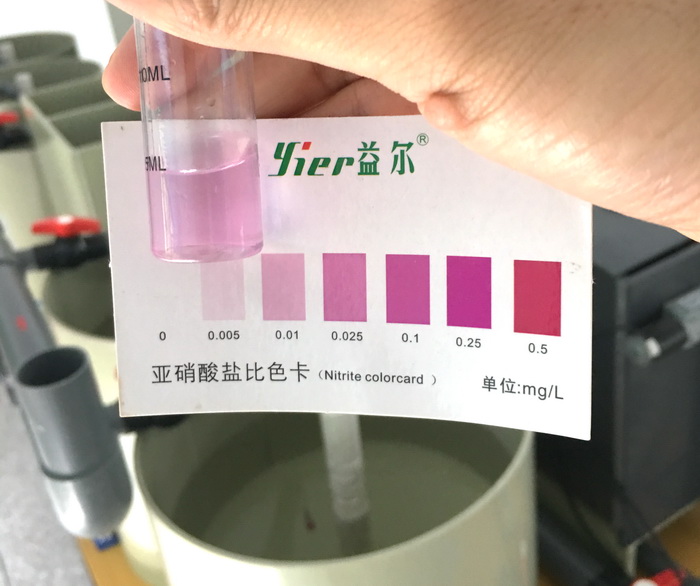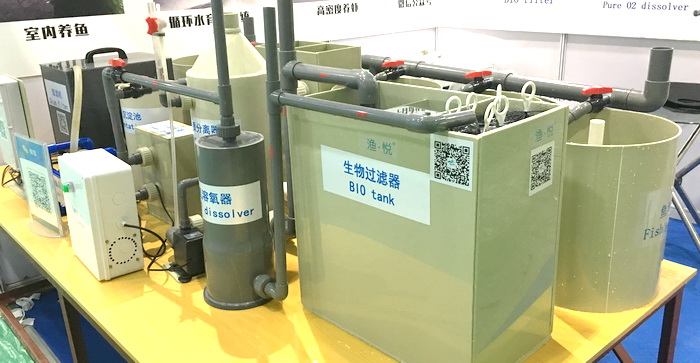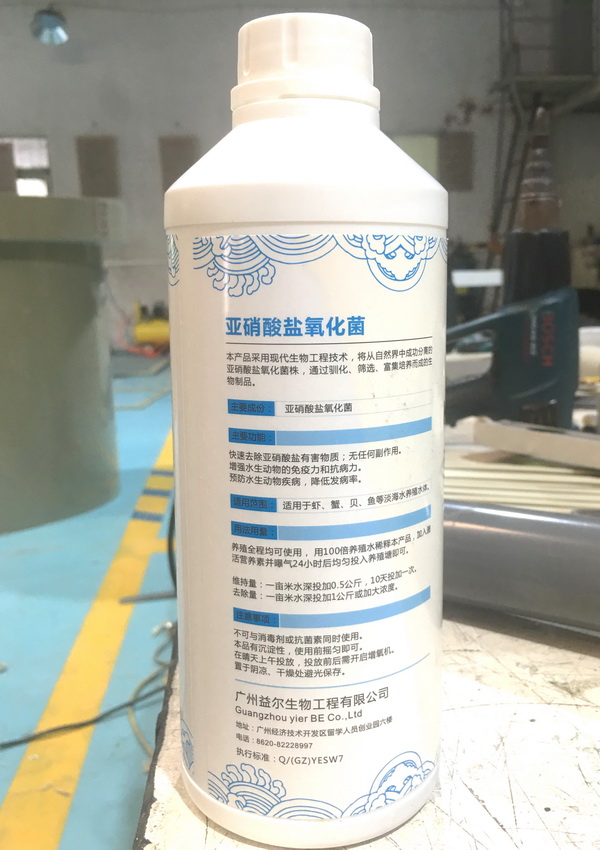As we know, organic matter in the recycled aquiculture environment will accumulate rapidly due to the excessive density of aquiculture and continuous feeding. Organic matter is decomposed step by step under the action of bacteria. The concentration of ammonia, nitrite, nitrate and other soluble substances increased rapidly. Among them, ammonia and nitrite can inhibit the respiration of aquatic animals, causing gills redness, swimming in ponds, stealing dead and other symptoms. If not solved in time, a large number of fish and shrimp will die. Therefore, the removal of inorganic nitrogen is an important link in both outdoor pond and indoor recycling aquaculture.
In factory circulating aquiculture, if the water source is sufficient, the change of water can be increased to dilute the concentration of ammonia nitrogen and nitrite. But since it is indoor circulating aquiculture, there are objective restrictions such as unseasonal production or water shortage. If the water change is too large, the cost of heating or cooling water will increase. At the same time, a large number of water changes will lead to the stress response of fish and shrimp, resulting in fish and shrimp disease. To prevent this from happening, we should focus on the removal of ammonia nitrogen and nitrite through biological filtration.

We have discussed the nitrogen cycle in water bodies in several articles. Organic nitrogen is mainly in the form of protein, peptide and amino acid. These are the energy materials necessary for the growth of fish and shrimp. After being digested and absorbed by fish and shrimp, it becomes ammonia and nitrite. In addition, there will be more bait, dead algae, fungi and so on. These organisms need to be transformed and decomposed under the action of microorganisms. It is lactic acid bacteria, bacillus, bacillus subtilis and other decomposing bacteria that undertake this mission. At this time, the water quality will undergo subtle changes. Because the organic acid in water increases, the PH value of water body drops.
Furthermore, when there are more and more ammonia and other substances in the water, the PH value of the water will gradually rise due to the alkalinity of ammonia solution. When ammonia concentrations rise, nitrifying bacteria and nitrifying bacteria in the water become involved. Ammonia and nitrite break down into non-toxic nitrate in fish and shrimp. Nitrate is easily absorbed by algae or plants. Thus, if there is a suitable species of algae in the breeding pond, the algae in the water will start to multiply with the support of other environmental variables. Start a new cycle.

The establishment of biological system in natural state is often inconsistent with the peak concentration of nitrogen source in water. Because it takes time for microbes to multiply. Nitrosous bacteria, for example, do not thrive when ammonia concentrations are highest in water. The natural reproduction period of nitrifying bacteria is about 30-45 days, and it needs the support of dissolved oxygen, PH value, light, fungicide and other factors in water. To speed up the establishment of the system, we can artificially increase the release of beneficial microorganisms.
This problem should be considered in the design stage of high density circulating aquaculture system. Therefore, after the installation of the system equipment, we can "activate" the water body before seedling release. In addition to normal operations such as aeration, filtration and water quality adjustment, a certain amount of fish pulp or fish meal can be put into the water body. At the same time put a certain amount of beneficial microorganisms. These microorganisms should contain a variety of compound bacteria such as bacillus and nitrifying bacteria mentioned above. During the operation of circulating water system, the concentration of ammonia and nitrite in water quality should be tested regularly and the test results should be recorded. So hopefully, we're going to get a gradual decline. When the ammonia and nitrite in the water drop to meet the water quality requirements, we can put fish and shrimp fry into the water. At this point, the processing capacity of the biofiltration system in the system is at a high level. Like this. Once the fish and shrimp are released into the water, the biofiltration system takes over the task.

In practice, the establishment of biofiltration system should also pay attention to the following points:
1. The specific size of the biofiltration system should take into full consideration such factors as the total amount of aquaculture water and aquaculture density. Including feed protein content and other parameters. The total protein input and conversion rate will affect the whole nitrogen cycle. From organic nitrogen to inorganic nitrogen. To ammonia and nitrite, nitrate, algae, etc. Every link has a mistake, may lead to "traffic jam".
2. Forms of biological filtration. In general, trickling biofiltration works best. Tidal biofiltration is the second most effective. But tidal biological filtration is relatively easy to build. The easiest to build is a biochemical filter. But it works worst. And need to add oxygen aeration and other operations to cooperate with it.

3. In addition, the filter material with the best effect should be selected. In practice for many years, customers have reported that the brush is a biofiltration material with good effect and easy cleaning.
4. Microbial selection. There are so many biotech companies out there. We need to keep trying and testing. Until you identify the best product to use.
Contact: Jack Lee
Phone: 13560241557
Tel: 020-22921925
Email: 1291544875@qq.com
Add: Guangdong guangzhou